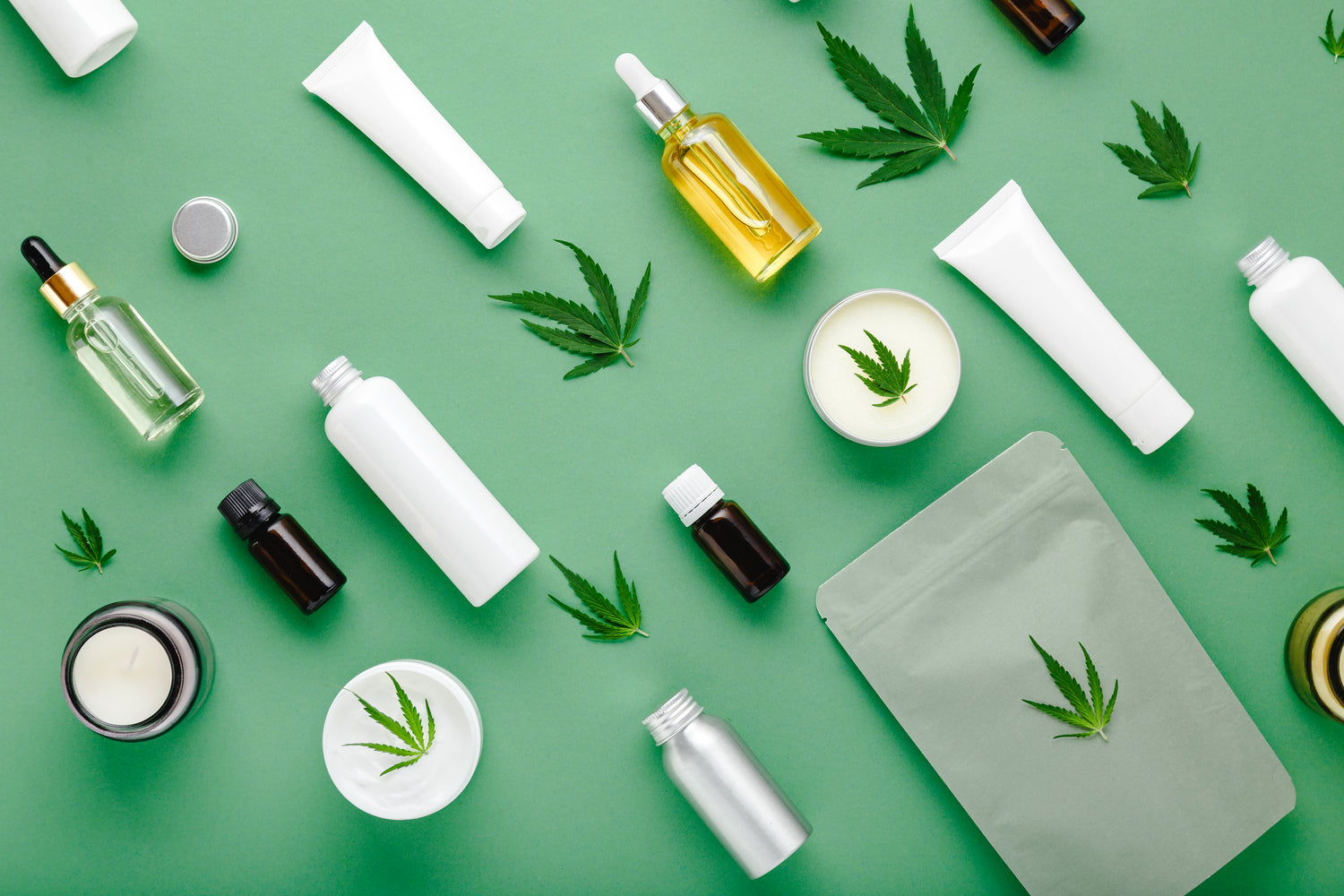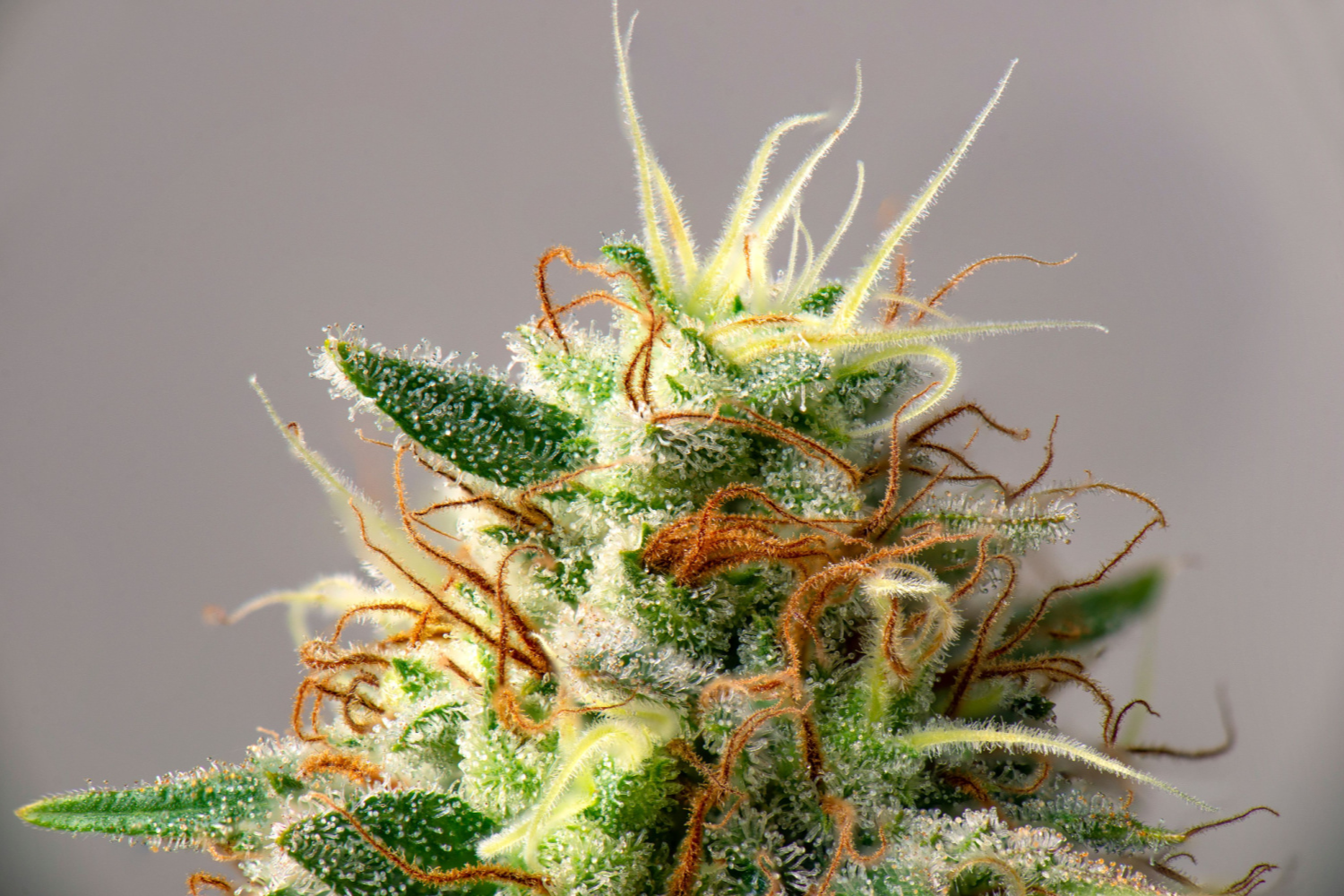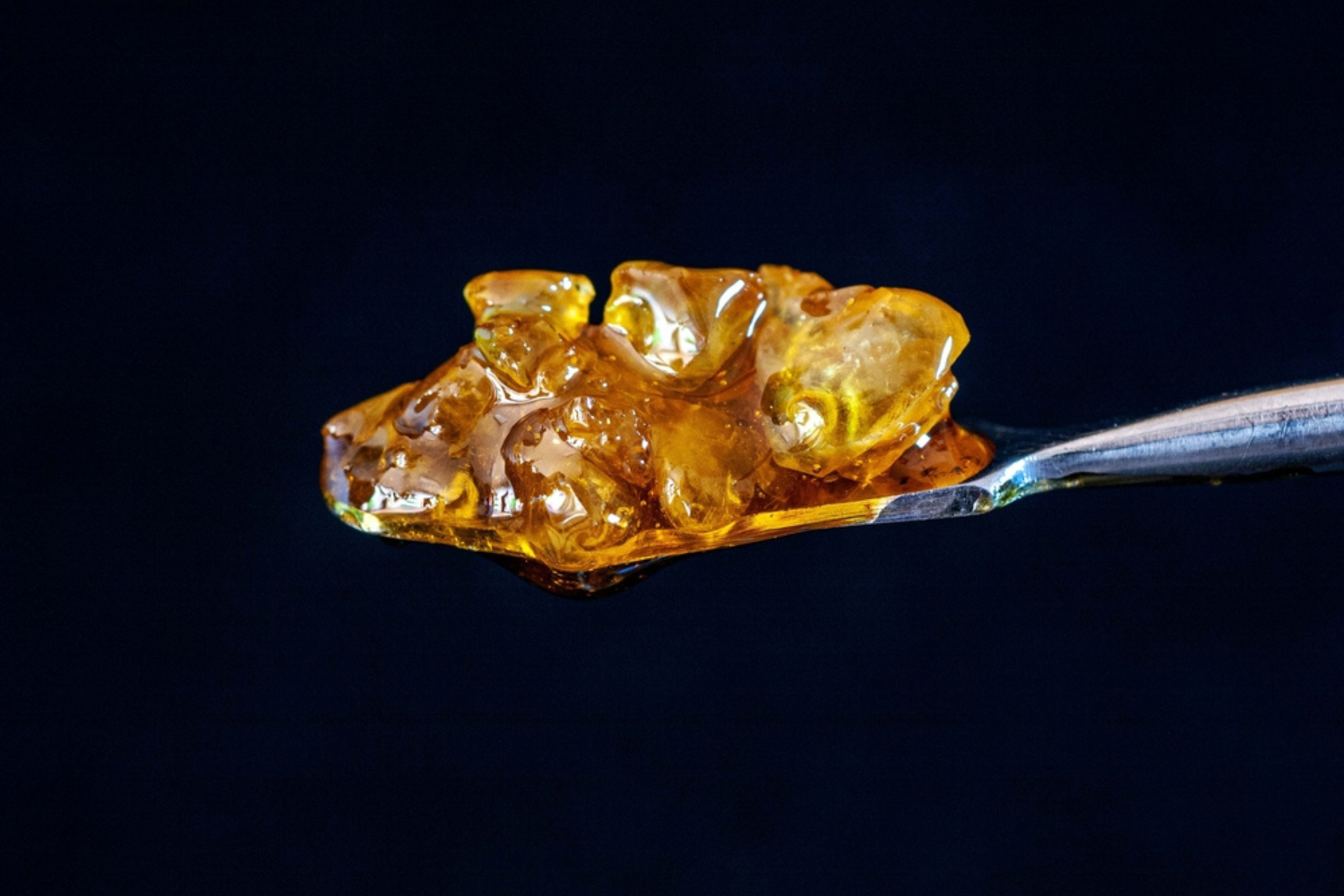CBD hemp flower may be a newer product in the CBD world, but its popularity is hardly surprising. For the first time, flower smokers can enjoy hemp bud the way we've been using THC flower, such as joints, pipes, or dry herb vapes.
However, the cannabis plant is complex. If you look at CBD flower and weed, they may appear indistinguishable. But we all know what they say about appearances because when it comes to telling CBD flower from weed, appearances can indeed be deceiving.
So how do you tell CBD flower from weed? Is there even a difference, and if so, how do you spot it? As a consumer, it's critical to understand what separates CBD flower and weed. Let's unravel that mystery so you can make the correct decision when purchasing flower.
For the purposes of this article, we'll use "CBD flower" when referring to CBD buds derived from hemp. But as we're about to find out, the difference isn't so clear-cut.
What is CBD Flower?
"CBD flower" can have two definitions, depending on context and legal regulations. Before we get into that, it's important to clarify where CBD flower and marijuana flower come from.
We often use "cannabis" when referring to high-THC flower. However, all flower - regardless of cannabinoid content - comes from the cannabis sativa plant species. "Hemp" and "marijuana" aren't scientific terms. Instead, these are used for legal reasons to distinguish between cannabis containing less than 0.3% THC (hemp) and more than 0.3% THC (marijuana).
With that in mind, CBD flower is technically any cultivar ("strain") of the cannabis sativa plant containing a large amount of CBD and comparatively little THC.
In other words, CBD flower is not synonymous with hemp. There are "marijuana" strains with marginally more than 0.3% THC and a lot of CBD.
However, as a hemp-derived CBD user, your definition of "CBD flower" likely refers to hemp buds, not marijuana buds.
What is Hemp Flower?
Hemp flower is cannabis that contains 0.3% THC or less, but that doesn't mean the strain was grown on a hemp farm or from flower considered "hemp." Any cannabis that doesn't cross the 0.3% THC threshold is considered "hemp."
On the flip side, it's possible for hemp cultivars to accidentally exceed 0.3% THC. Anything above that limit - even 0.4% - is often called "hot hemp," because it's technically "marijuana." Consequently, the hemp flower is no longer protected by the federal 2018 Farm Bill that legalized hemp and hemp CBD products (although regulations vary in some states).
Aside from the pesky legal complications, hemp flower is virtually indistinguishable compared to buds from marijuana plants.
Benefits of CBD Flower
CBD flower has a variety of advantages. While some research and anecdotal evidence supports the therapeutic effects of CBD, it's important to stress that none of the following is meant to constitute medical advice. If you plan to smoke CBD buds, check with your doctor to see if cannabis flowers are right for you.
For now, we'll cover the general benefits so you can decide if they fit your wellness needs.
Fast-Acting
Smoking cannabis flower is the fastest way to enjoy the effects of cannabis products. When burned or vaporized, the cannabinoids go straight through the lungs and into the bloodstream. You'll immediately feel the end result, which is handy for quick, short-term relief.
Versatile
Regarding consumption, high-CBD buds are the most versatile. Depending on your preference, you can load a bong, pipe, or roll a classic joint. Dry herb vapes are also excellent, affording the most bioavailability and customizable settings. As an added bonus, you can use the leftover flower in your vape to make edibles.
Inexpensive
Although prices vary, hemp flowers are generally affordable. Prices can be as low as $10.00 for 3.5 grams, which is a steal. However, keep in mind that you get what you pay for when it comes to hemp flowers - or any cannabis flowers.
While it may be tempting to choose the dry herb CBD products that have the lightest impact on your wallet, quality over quantity is the motto you should live by.
Huge Selection of Products
As we mentioned, people generally use the word "hemp" when referring to cannabis health supplements and flower. However, the hemp plant isn't one broad category. No two hemp farms will have completely identical strains down to the last cannabinoid.
In other words, "hemp" can be broken down into various cultivars. However, vendors have recently started naming those strains to match the popular THC household names.
Hawaiian Haze, Sour Diesel, White Widow, OG Kush, and Pineapple Express are just a few hemp plant strains that bear the names of their THC counterparts. These CBD flowers are bred accordingly to mimic the effects of those "marijuana" strains - minus the high.
Doesn't Get You High
Since the THC content of CBD flower is so low, it's impossible for it to have intoxicating effects. While oils and vapes extracted from hemp plants allow you to choose a THC-free broad-spectrum product, it's impossible to remove THC from cannabis buds.
Consequently, it's inevitable to consume trace amounts of THC. However, the THC content is so limited that it's impossible for hemp plant CBD flowers to have an intoxicating effect.
What is Weed (Marijuana)?
We've already covered the difference between "cannabis," "hemp," and "weed" (cannabis sativa with a THC content of 0.3% or less). The term "marijuana", on the other hand, has a rich and notorious history.
Although the debate still rages, many people consider "marijuana" (also spelled "marihuana") to be grounded in racism.
In the years leading up to cannabis prohibition, prejudice against Mexican immigrants was rampant in politics and public opinion. Prohibitionists gave the drug a Latin-sounding name to help hammer the point home that marijuana wasn't - for lack of a better term - a "white person drug."
Authorities exploited this name, further pushing the Reefer Madness narrative that still continues to this day - albeit on a smaller level. Government officials argued that marijuana was a dangerous drug that led to psychotic episodes, allegedly causing minorities to harm white people.
As early as the 1940s, researchers learned that high-THC cannabis didn't cause the violence, addiction, or severe health risks laid out in government propaganda. But legislators - especially the Nixon administration- suppressed that information. Keeping marijuana illegal and associating it with minorities helped further a racist agenda.
It wasn't until years later that John Ehrlichman, Assistant to the President of Domestic Affairs in the former Nixon administration, revealed the following:
“You want to know what this [war on drugs] was really all about? The Nixon campaign in 1968, and the Nixon White House after that, had two enemies: the antiwar left and black people. You understand what I’m saying?
We knew we couldn’t make it illegal to be either against the war or black, but by getting the public to associate the hippies with marijuana and blacks with heroin, and then criminalizing both heavily, we could disrupt those communities. We could arrest their leaders, raid their homes, break up their meetings, and vilify them night after night on the evening news.
Did we know we were lying about the drugs? Of course we did.”
The Nixon administration eventually introduced the Controlled Substances Act in 1970, which went into effect the following year. It placed marijuana as a Schedule I Controlled Substance, lumping it with drugs like heroin and sealing cannabis' fate for decades to come.
CBD Flower vs. Weed Similarities and Differences
CBD bud and "weed" are almost indistinguishable, despite a few subtle variations. Let's look at their differences and similarities next.
CBD Bud vs. Weed Bud Smell
Depending on the terpenes, cannabis can smell lemony, earthy, sweet, skunky, cheesy - if you can think of a smell, odds are there's a CBD hemp flower or weed strain with that aroma.
CBD buds and weed don't have limits on the numbers and types of terpenes possible. All forms of cannabis can contain any kind of terpene profile. Cannabinoid content has no bearing on that.
CBD Bud vs. Weed Bud
CBD bud and weed bud are similar in most respects - at least from a scientific standpoint. They come from the same plant species. Although some cannabis can exceed the 0.3% THC content of legal "hemp," weed bud can still contain over 20% CBD with less than 1 or 2% THC. However, if that THC percentage hits 0.4% or higher, the cannabis crosses the legal threshold from "hemp" to "weed" or "marijuana."
Outdoor CBD Bud vs. Indoor Bud
Let's take a quick aside and discuss outdoor and indoor cannabis plant flower. Specifically, knowing what that means for you as a CBD user is important.
Growing Method
Outdoor buds grow on large farms and rely exclusively on the whims of the elements. Indoor cannabis grows in greenhouses using climate control in either soil or hydroponic systems.
Cost
Outdoor growing is cheaper than indoor by an order of magnitude. This is because outdoor hemp doesn't require high-power greenhouses or hydroponic systems with climate control. By cutting down on manufacturing costs, hemp vendors sourcing from outdoor plants can pass the savings on to you.
Inversely, indoor growing is more expensive due to the equipment and power demands, which also impact price.
Appearance
Outdoor bud is leafier and looser than indoor-grown cannabis. This rugged appearance is a consequence of the cannabis plant's exposure to the elements, often withstanding rough weather and other unfavorable conditions.
Many see outdoor as inferior to indoor based on appearance alone.
Indoor buds are denser than their outdoor counterparts. They can also vary in color and generally look more appealing.
Potency
Outdoor growing is essentially a shot in the dark. Since we can't control the weather, it's possible for poor growing conditions to affect plant quality. Specifically, it's harder to consistently create high-potency cannabis outdoors.
Indoor growth, however, gives cultivators precise control over the climate. They can therefore create a favorable environment for cannabinoid and terpene development.
Weed also tends to have a larger amount of crystal formations known as "trichomes," where most of the cannabinoids and terpenes reside.
Cannabinoid Content
CBD flower is any flower containing a substantial amount of CBD (enough for therapeutic effects). Today this normally refers to the "hemp" cultivar since it contains 99.7% CBD by dry weight.
On the other hand, weed is generally intoxicating due to its high THC content. However, there are some exceptions, as we noted before.
How to Tell CBD Flower from Weed
There are plenty of easy ways to tell CBD flower from weed. All it takes is some light reading.
Look at the Packaging
The package label (assuming it's accurate) lists the cannabinoid percentages and - ideally - a total terpene percentage as well. The more information, the better.
Scan the QR Code on the Packaging
Some vendors provide QR codes directly on the packaging. This is handy if you own a smartphone. Simply use your camera app to scan the code, and you'll instantly access third-party lab test reports.
Contact the Grower
If you have questions or concerns, most growers allow you to contact them. Depending on the company, they may offer e-mail, phone, or live chat options.
Check the Lab Report
Lab reports offer a detailed breakdown of cannabinoids, terpenes, and analyses to confirm the product contains no fungi, solvents, bacteria, or chemical pesticides.
Lab reports are essential. Stay away if a CBD bud company doesn't offer access to these reports.
Go to the Grower's Website
The grower's website may have some valuable information about their growing methods (i.e. outdoor, organic) and hemp source(s). The answer may just be a click away if you have questions or concerns.
Take a Puff
We placed this recommendation last because it's not the best method to test your CBD flower. But at the same time, it's a guaranteed way to confirm that the bud you purchased contains less than 0.3% THC.
Does CBD Flower Look like Weed?
Yes. CBD flower looks like weed. Whether grown indoors or outdoors, the buds will look indistinguishable from each other (that's why it's important to do your research on a product).
Does CBD Flower Taste Like Weed?
Yes, CBD flower tastes like weed. They're both grown, dried, and cured from the same plant species.
CBD Flower vs. Weed Legality
The legal difference between CBD flower and weed is that CBD flower (hemp flower) is legal on the federal level, while weed isn't.
Although the federal government has banned high-THC cannabis, over half of U.S. states legalized its medical use, and a few now allow recreational sales.
However, state regulations vary, and CBD products may not be fully legal (if at all) in certain states. Check your local laws to make sure you can legally purchase CBD bud.
What's the Difference Between CBD Weed and Normal Weed?
We've covered this extensively so far, so let's recap. The core differences between CBD weed and normal weed are:
-
Cannabinoid content - CBD bud carries less than 0.3% THC.
-
Legality - CBD flower from hemp is legal at the federal level.
-
Purpose - CBD bud is mostly used for therapeutic and wellness purposes, while weed's intoxicating effect can have recreational and medical applications.
Best CBD Flower to Buy
There are limitless places to buy hemp buds, but what's the best CBD flower to buy? If you're looking for top-tier individual or wholesale CBD flower, Bonata has you covered.
Some of their best strains include:
All strains are indoor-grown for a variety of colorful, dense, potent, and consistent CBD buds.
Conclusion: How Do I know if My Weed is CBD or Bud?
You can't know if your bud is CBD or "weed" by simply looking at the flower. But if a vendor is reputable, look at the packaging, check the third-party lab tests, or contact the company.
If you really want to take your due diligence to the next level, research the grower and see what their website reveals. The more you learn, the less likely you are to accidentally purchase high-THC "weed."
At the end of the day, both come from the same plant species and can contain the same versatile terpene and cannabinoid profiles - the only difference being the 0.3% THC threshold.
Just remember to exercise due diligence in your purchases.






